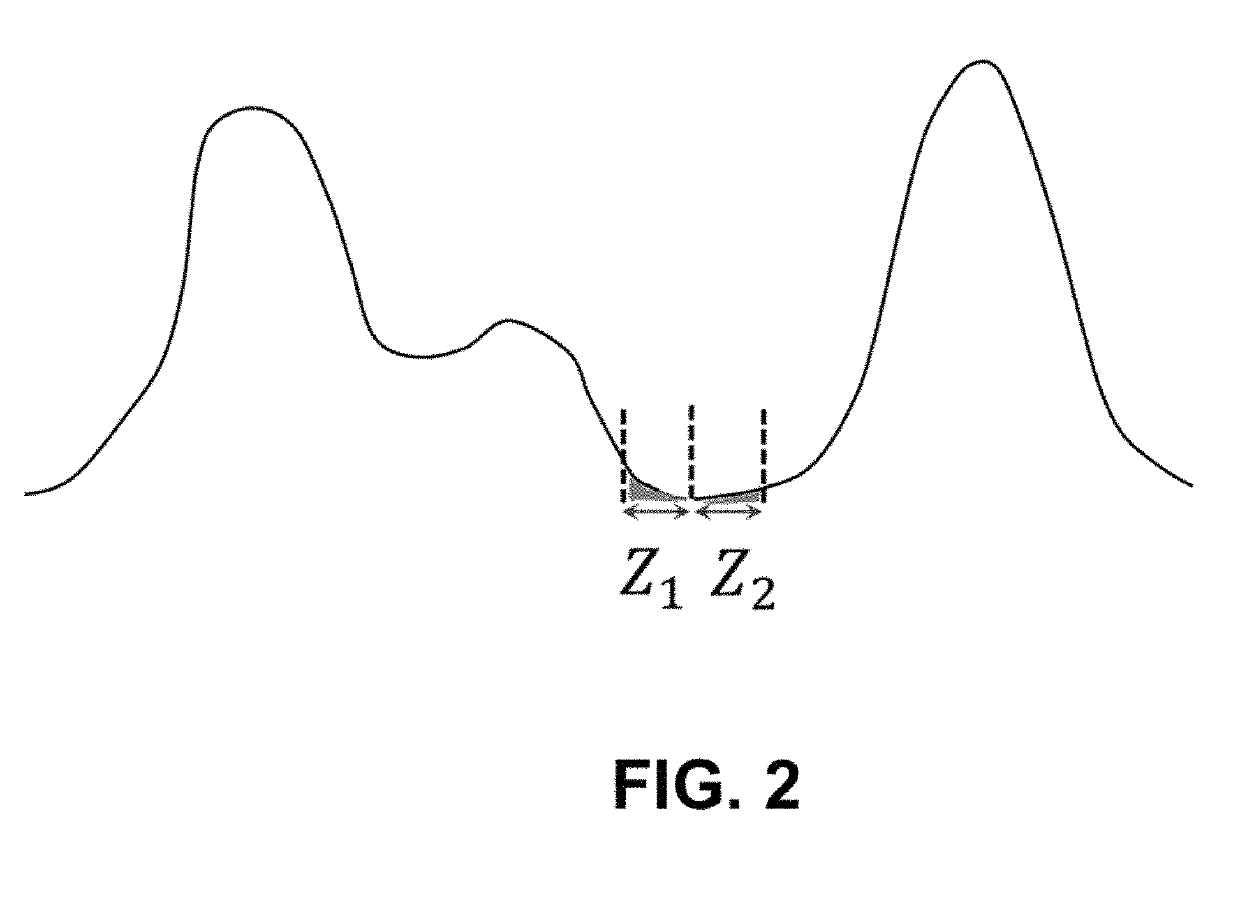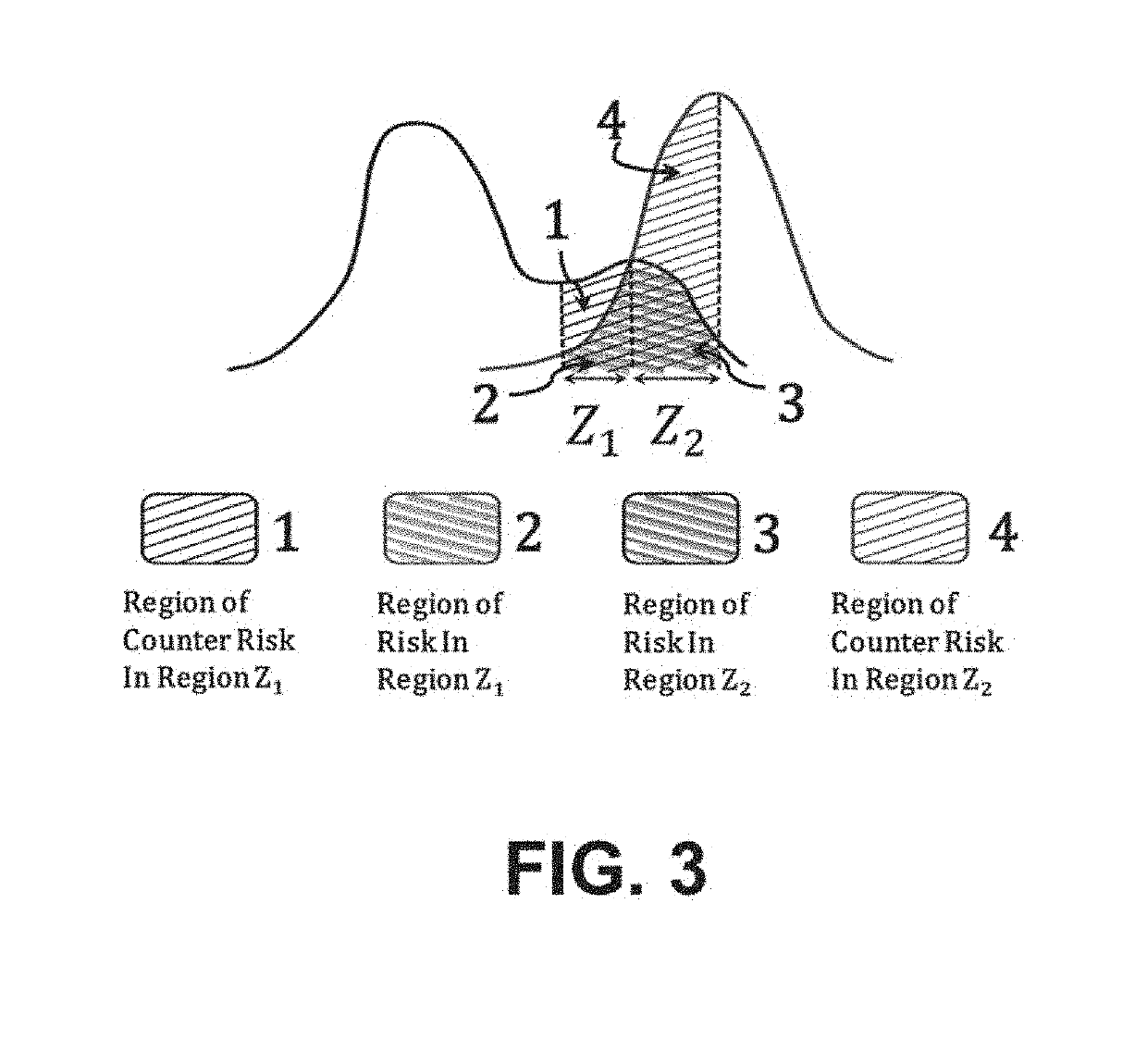Computer-implemented methods and systems for optimal linear classification systems
a linear classification and computer-implemented technology, applied in the field of learning machines, can solve the problems of slow convergence speed, unreliable model-free architectures based on insufficient data samples, and difficult design of bayes' classifiers, and achieve the lowest risk of each classification system and highest accuracy
- Summary
- Abstract
- Description
- Claims
- Application Information
AI Technical Summary
Benefits of technology
Problems solved by technology
Method used
Image
Examples
Embodiment Construction
[0024]The present invention involves new criteria that have been devised for the binary classification problem and new geometric locus methods that have been devised and formulated within a statistical framework. Before describing the innovative concept, a new theorem for binary classification is presented along with new geometric locus methods. Geometric locus methods involve equations of curves or surfaces, where the coordinates of any given point on a curve or surface satisfy an equation, and all of the points on any given curve or surface possess a uniform characteristic or property. Geometric locus methods have important and advantageous features: locus methods enable the design of locus equations that determines curves or surfaces for which the coordinates of all of the points on a curve or surface satisfy a locus equation, and all of the points on a curve or surface possess a uniform property.
[0025]The new theorem for binary classification establishes the existence of a syste...
PUM
 Login to View More
Login to View More Abstract
Description
Claims
Application Information
 Login to View More
Login to View More - R&D
- Intellectual Property
- Life Sciences
- Materials
- Tech Scout
- Unparalleled Data Quality
- Higher Quality Content
- 60% Fewer Hallucinations
Browse by: Latest US Patents, China's latest patents, Technical Efficacy Thesaurus, Application Domain, Technology Topic, Popular Technical Reports.
© 2025 PatSnap. All rights reserved.Legal|Privacy policy|Modern Slavery Act Transparency Statement|Sitemap|About US| Contact US: help@patsnap.com



